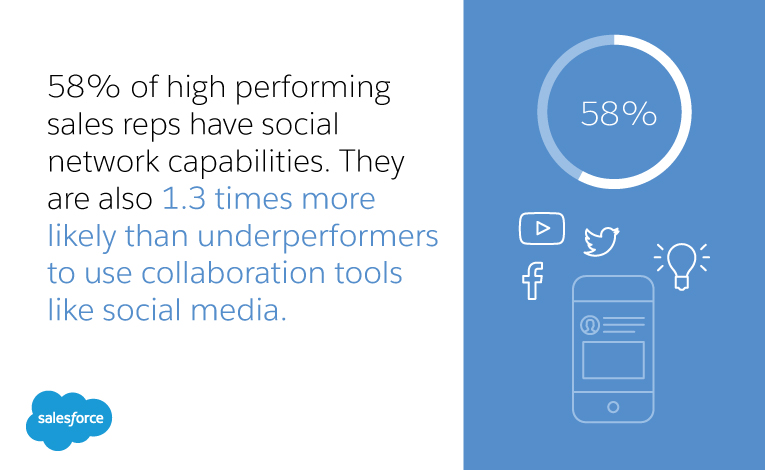Sales closing techniques
10 Closing Techniques Better than "ABC"

When it comes to salesperson culture, there are few depictions in modern film that are as iconic as one scene from 1992’s “Glengarry Glen Ross.” The character Blake, portrayed by Alec Baldwin, is called in to “motivate” a group of salesmen. While threatening and verbally abusing them, he makes a statement: That salespeople should “ABC” — Always Be Closing.
Alec Baldwin’s profanity-laced motivational scare tactics aside, ABC has become a widely used sales strategy in a number of sales-focused industries. In simple terms, ABC means that everything a salesperson does should be with the goal of moving a lead through the sales funnel. Additionally, it means that difficult, slow-moving, or stalled leads should be abandoned, so that salespeople can focus all of their energies on better prospective customers. Heavily reliant on high-pressure sales tactics, ABC may seem harsh, but it works.
Or does it?
The world of sales has changed since 1992. The customers of today are much more wary of products in general, and salespeople specifically. They are less trusting of promises, and would much rather do their own research than rely on information from non-objective parties. As a result, today’s salespeople are spending less time “closing” and more time performing administrative tasks, devising strategy, generating leads, and following up with clients. Taken altogether, these other tasks — tasks that Blake would have scoffed at — focus on the needs of the client, rather than the needs of the seller.
Always be there for your customer.
If ABC isn’t as relevant as it once was, then it needs a replacement. How about this: Always be there for your customer. While “ABTFYC” may not be quite as memorable or clear-cut as its predecessor, but it is certainly more customer-centric.
A customer-centric strategy isn’t about the products or services being offered, the business behind those products, or the sales team itself. It’s about helping customers find the best solutions to their problems. With this in mind, here are 10 customer-centric sales closing techniques that won’t put your customers on the defensive:
10 effective sales closing techniques:
1. Personalize.
2. Do your research.
3. Ask questions.
4. Embrace technology.
5. Meet face to face.
6. Be enthusiastic.
7. Tell a story.
8. Get hypothetical.
9. Offer a “test drive.”
10. Don’t beat around the bush.
1. Personalize.
Sellers have come to expect a personalized and engaging buying experience. In fact, 72% of business buyers expect vendors to personalize engagement to their needs. By personalizing your interactions with your customers, you show them you value their needs above your own. ABC sales teams want to throw a wide net and hope for the perfect lead. Customer-centric teams create a targeted, relevant customer journey, turning every lead into the perfect lead.
2. Do your research.
Treating your leads like people (rather than numbers) means knowing enough about them to create a usable client profile. Data gathering and analytics tools can help you understand what your individual customers want. Likewise, connecting with them personally across social media and other online communities can give you a more complete picture of their situation. The best sales reps understand the importance of harnessing social media. In fact, 58% of high performing sales reps have social network capabilities. They are also 1.3 times more likely than underperformers to use collaboration tools like social media.

3. Ask questions.
The main idea behind customer-centric sales is that it isn’t about you, it’s about them. When you communicate with your customers, don’t talk about you or your business, at least not at first. Instead, talk about the client. Ask them questions. Get them to open up about what they need and the problems they face. Be an active listener. Encourage them to share their story. Then, when appropriate, share how your product or service can offer a solution.
4. Embrace technology.
Even if you’re only working with a handful of leads at any given time, trying to keep the specifics of each relationship organized and available can be a nearly impossible job. Thankfully, CRM technology makes it easy to gather and segment lead data. CRM lead profiles ensure that you always know personal preferences, customer histories, and which clients need what solutions. Additionally, the best CRM solutions incorporate predictive AI, which high-performing sales teams are 4.9 times more likely to use than underperforming teams.

5. Meet face to face.
In this era of digital communication, it can be easy to reduce people to a collection of words on an email thread, or a voice on a telephone line. Plant the seeds for a real client relationship, by making a point to meet your leads face to face. They’ll see you value them enough to invest your time, and they’ll also be less likely to think of you as just another corporate sales drone. For even more effective meetings, do something fun and memorable — a lunch or a day at the golf course is bound to be a better experience than an hour in a stuffy office.
6. Be enthusiastic.
If potential customers feels you are uninterested in your own products or services, they’re certainly not going to respond with any enthusiasm. Be excited. Show them just how much confidence you have in your product or service, and how it can help them. Even if you’ve been selling the same thing for years, try to look at your product or service through the eyes of your new lead, and you should be able to generate the enthusiasm that can prove contagious.
7. Tell a story.
There’s a reason that good storytellers are valued in almost every culture. Well-told stories create a connection of empathy, where listeners become emotionally invested in the subject matter. Sales executives who learn how to weave an engaging narrative not only build better relationships, but are also much more likely to stick in a client’s memory. Practice your storytelling, be engaging, and remember that how you say something can be at least as important as what you say.
8. Get hypothetical.
Sometimes, the only thing standing between a lead and the end of the customer journey is one or two easily addressed concerns. If this looks to be the case, put your potential customer in a hypothetical scenario. Tell them to picture all of their options, then have them imagine that each option is the same price. In this situation, which option would offer the best solution? If your offering is the best choice when price isn’t an issue, then all you have left to do is negotiate a fair price.
9. Offer a ‘test drive.’
Imagining how effective a product or service might be is one thing, but experiencing it is something else entirely. If you can highlight the advantages of your product or service while the lead is using it, then you won’t have to ask them to take a leap of faith.
10. Don’t beat around the bush.
If you’ve done everything you can to build the client relationship and showcase the advantages of your product or service, and you still haven’t closed the deal, it could come down to being the squeaky wheel. Ask your leads exactly what it would take for them to buy, suggest related products or services, and always remember to follow up (whether the sale is successful or not). Sometimes a lead is not ready to buy right now but may end up interested at a later time. If you’ve done your part to build a good relationship, you’ll be the one the lead wants to see.
A word on sales closing techniques and types of closes:
The way modern sales are done is constantly evolving. Sales closing lines that were effective in the past might not be effective now. Also, there are a number of different types of sales closes you may hear about in the industry. These modern sales closes include the following: the assumptive close, the alternative close, the direct close, the summary close, the trial close, the hard close, the angle close, the away close, the empathy close, and the artisan close.
Many sales reps may be familiar with the direct close and the assumptive close and have a number of related sales closing lines at their disposal. Other techniques may be less familiar. And while it’s important to understand a number of closing techniques, the best salespeople all have one thing in common: They do a great job of focusing on the customer.
With customer-centric strategies, you’ll always be closing.
ABC may seem like a powerful, confident way to approach your leads and prospects, but the reality is that the words “powerful” and “confident” put the emphasis in the wrong place. High-pressure sales, scare tactics, and bullying aren’t the game changers some like to think they are, and even if they were, there'd lead only to short-term gains, followed by long-term damage to your brand reputation.
The good news is that, with a customer-centric sales strategy, you’ll be able to help your leads get what they want, and you’ll make more sales in the process. ABC may be outdated, but as bad as the acronym ABTFYC might be, always being there for your customer will put you in the best position to provide a real, valued service. That means you’ll always be closing, even if your main focus isn’t always on closing.



